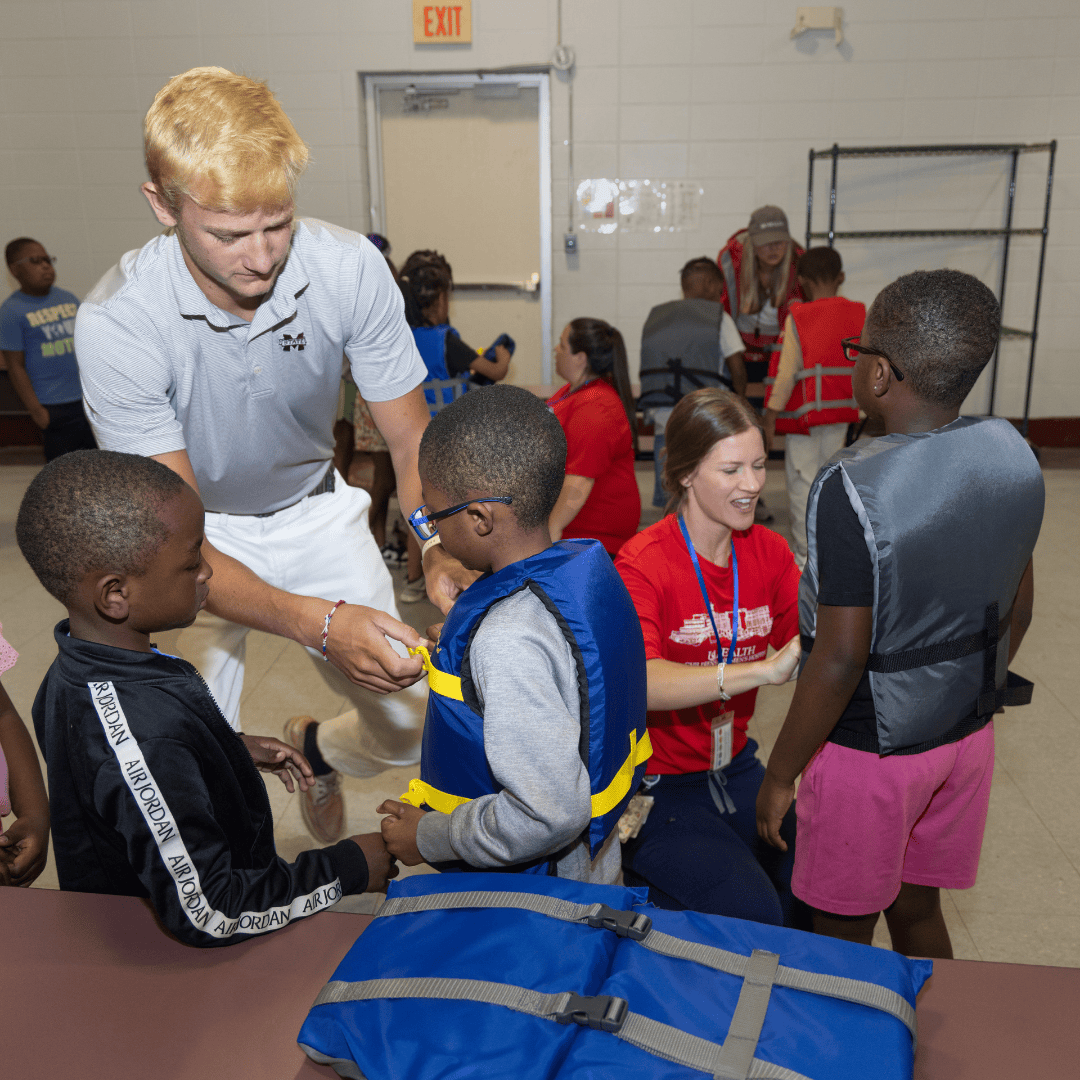
Teaching children the basics of water safety
Informed by research, the summer outreach is part of year-round efforts initiated by Children’s & Women’s Hospital to share education and keep kids safe.

By Casandra Andrews
[email protected]
Most days, child life specialist Jennifer Bisaga works inside the pediatric emergency center at Children’s & Women’s Hospital, supporting young patients and their families through scary experiences following injuries and illness.
On June 25, she joined a community outreach team that left the hospital to meet with more than 150 elementary school students to teach them water safety skills that could potentially save their lives.
Led by Children’s & Women’s Hospital pediatric outreach education coordinator Courtney Thomson, others from the team included Casie Crawford, director of pediatric nursing; Carley Friman, emergency department nursing staff educator; Amanda Curry, Samantha McCluer and Juliana Warren, all nurses who work in the emergency department.
For the second year, hospital employees took part in the Fuse Project's annual SPARK Summer Camp through its Avenue Bridge Collaboration Program, which unites community partners to close educational gaps and expand opportunities for children in the Dr. Martin Luther King Jr. Avenue community.
On a recent morning, groups of children from kindergarten through fifth grade filed into the brightly lit auditorium at Florence Howard Elementary and took seats in front of the stage. Crawford welcomed the children, introduced the hospital team and launched into the interactive program.
“We never swim alone because if you do, no one will know you are in the water,” Crawford told the students. “And we don’t stay in the water or on the beach if we hear thunder or see lightning. Just remember the water is fun but we have to stay safe.”
Informed by research, the summer outreach is part of year-round efforts initiated by Children’s & Women’s Hospital to share education and keep residents safe.
Children between the ages of 1 and 4 die from drowning more than any other cause, national data shows, and 66% of all fatal drownings occur between May and August. Drownings happen quickly and quietly, and no single prevention strategy is enough.
Bisaga, the child life specialist, focused her message on the dangers of drowning, asking the children if they knew what it was and how it might look. The kids raised their hands to answer, offering some signs that someone could be in distress. “If you see someone out there and they look like they are in trouble, you want to find an adult or a lifeguard.”
Following the talk, the children moved through stations, learning the correct way to wear a life jacket, among other skills. “This is going to save you from going under the water,” Crawford said. “Even if you are a good swimmer, you should still wear a life jacket.”



